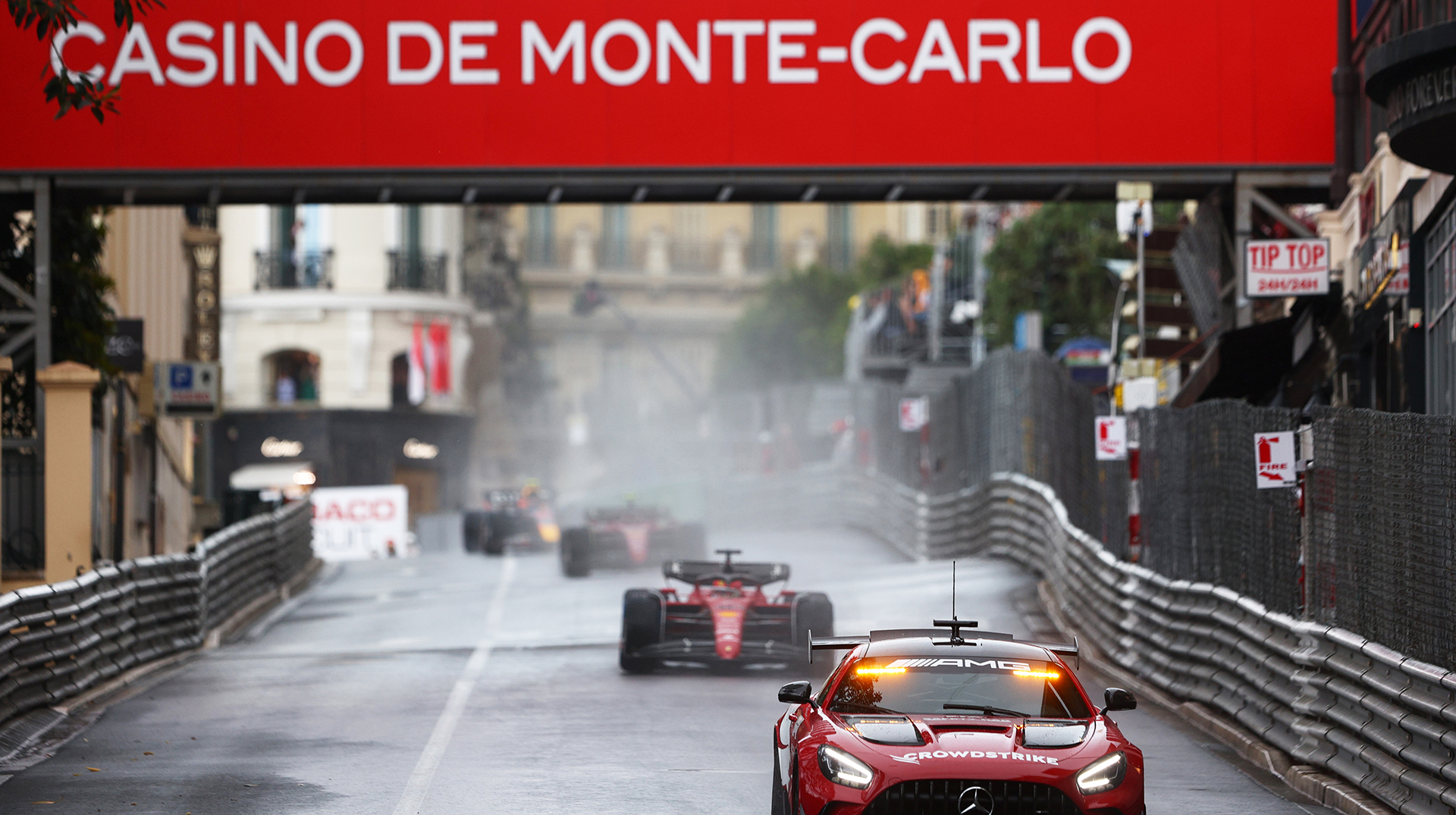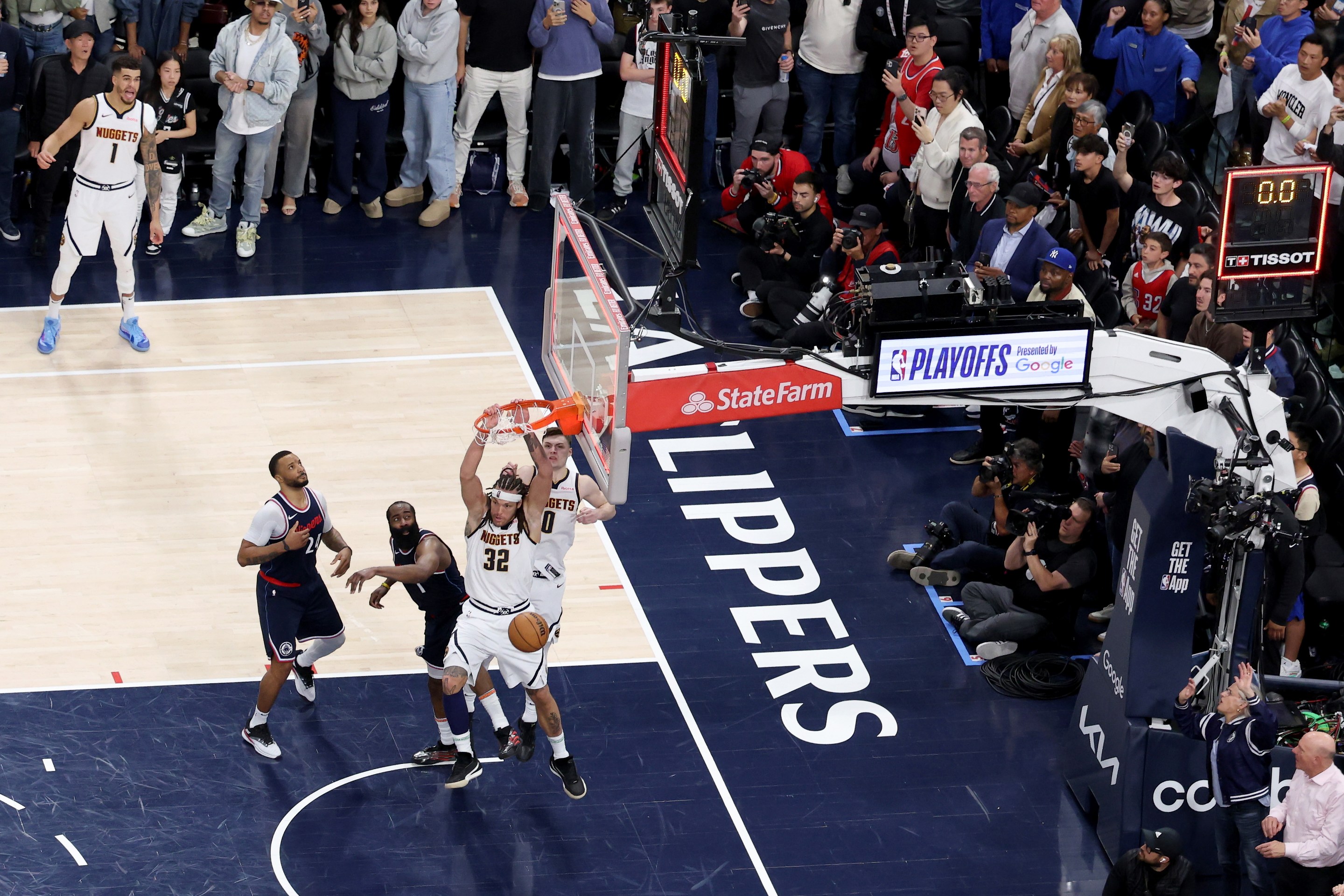The Monaco Grand Prix might be Formula One's most iconic race, but that's mostly down to the glamour of the Monte Carlo location, rather than anything that happens on the track. The race has been notably boring in years past, as the cars have gotten bigger and the track's already narrow width has become an impediment for overtakes. Frankly, there are no real places to pass rival drivers, so much so that Monaco is often called a "procession," with qualifying counting out as the real race. This is all true, unless it rains, which throws a wrench into team strategies and opens up the standings.
Well, it rained on Sunday, and mayhem promptly ensued. Let's list the notable incidents that happened during this year's edition:
- The race start was delayed over half an hour as rain began to fall ahead of the scheduled time. The commentators on Sky Sports were not happy about the decision to not start while the rain was barely coming down, as it reset everyone to wet tires, nullifying a bit of strategy that can make this a more riveting race.
- Instead of a normal standing start, the drivers did two formation laps behind a safety car before a planned rolling start.
- That did not happen, though, as the rain fell down even harder, turning the race into a red-flag situation, with every car returning to the pit lane.
- An hour and five minutes after the scheduled start, the race finally got going.
- After 30 laps, Haas driver Mick Schumacher lost control of his car in the back half of the lap, spinning out and slamming into a barrier so hard that his car broke in half. Somehow, Schumacher was completely fine, but out came another red flag.
- By the time the drivers came back out, there were only 45 minutes left on the race clock, which meant that the race would not go its full 77-lap distance.
Those are just the broad strokes, and they don't take into account the biggest moment in the race for first place: On lap 21, Charles Leclerc, the hometown boy who qualified on pole position, was told to pit by his team, only to run into a double stack, as his teammate Carlos Sainz had also come in on that lap. Leclerc had to wait for Sainz to get out of the way before he could swap his own tires, losing enough time to drop behind Max Verstappen into fourth.
Leclerc's reaction was as angry as one might expect from an error completely out of his control:
Charles Leclerc's uncensored audio and in-car camera on that pit stop pic.twitter.com/Zh5uxgpaaM
— CJ Fogler (@cjzer0) May 29, 2022
In the end, the way the top four exited out of the Schumacher-caused red flag is how the race ended. Perez was able to hold off Sainz post-stoppage, running on medium tires that began to wear off in the last few laps of the race in comparison to the Ferrari hard tires. Verstappen finished just behind Sainz to complete the podium, leaving Leclerc with only the consolation that he finished a race in Monaco for the first time in his career.
I haven't even mentioned how Fernando Alonso, the veteran Alpine driver, held up every driver behind him for about half the race, frustrating Lewis Hamilton in the process, as he could not overtake the Spaniard on Monaco's tight streets. Alonso's slow pace allowed the top four to catch up to the back of the pack, and Sainz blamed Nicholas Latifi's slow move out of the way for not allowing him to pass Perez.
In all, Monaco delivered more intrigue than it had in years past, but it still felt like more of a debacle than anything resembling a good race. It might also be the last race under these conditions: Monaco's contract with Formula One ends this year, and there are calls to remove the track from the calendar. I don't believe that will happen, as Monaco is the one race even non-F1 fans know by name, but there should be some changes to the layout to compensate for cars that are much bigger and more reliable than they were when the track first came to life. If they can add a spot where overtakes are possible, or even likely, then it would help shake up a race that needs a substantial amount of outside help to be interesting.






